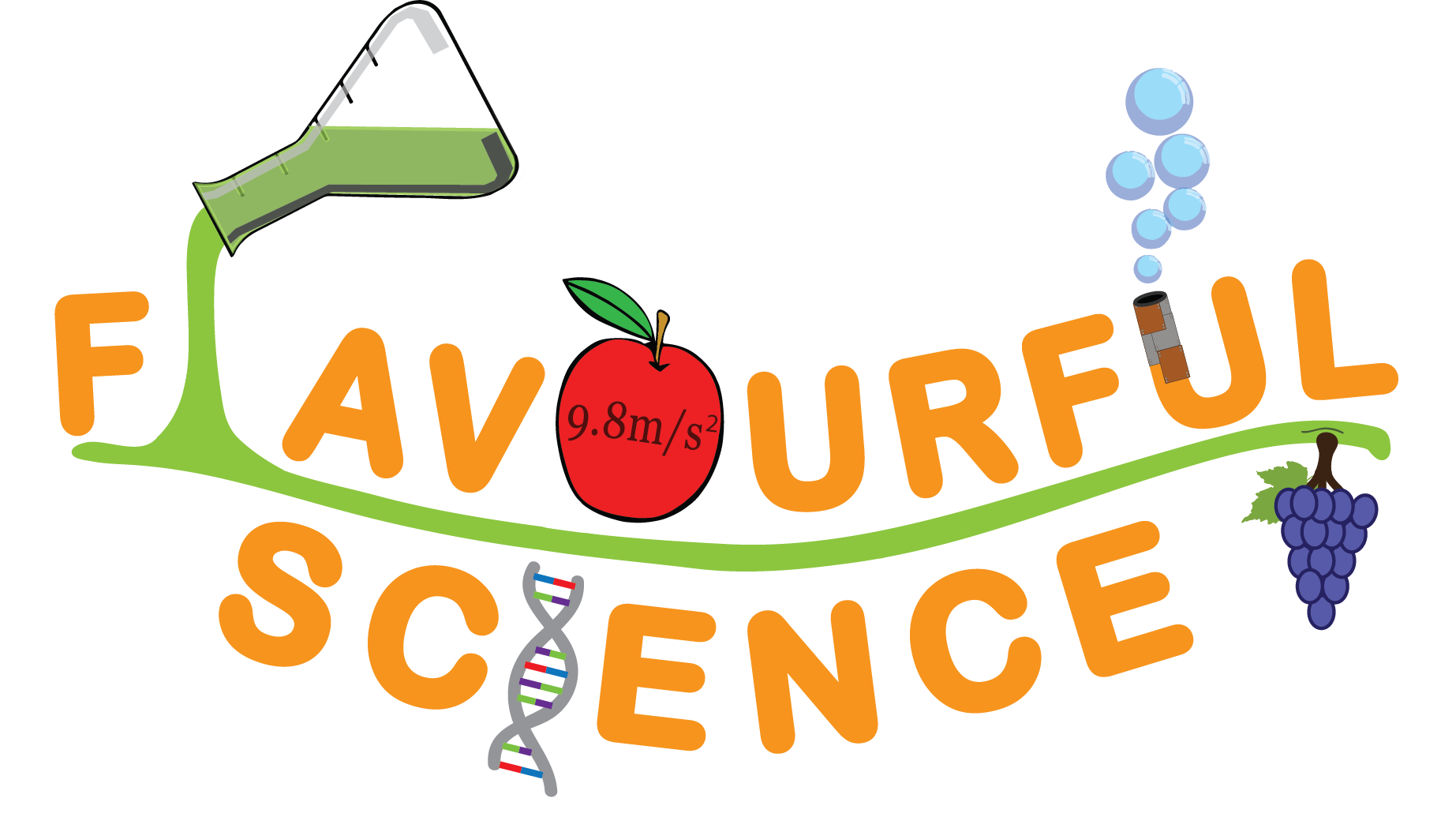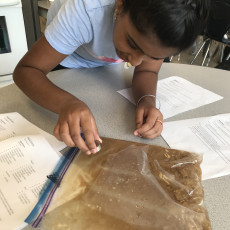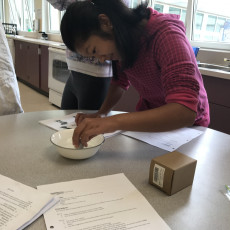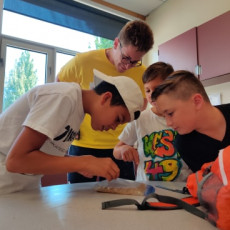Materials:
- 1 cup high iron “Life” or high iron cereal (~50% of daily serving)
- 3 stacked super magnet
- 1 bowl
- Water
- 1 zip lock bag (17.7 cm x 18.8 cm)
Procedure:
Part 1:
- Take a handful of cereal and crush in on the table.
- Pick up crushed cereal pieces using a super magnet.
Part 2:
- Put water into a bowl.
- Put 1 piece of cereal (or crushed cereal) onto the water so that it floats on the surface of the water.
- Use the magnet to move the cereal around on the water.
Part 3:
- Put all of your cereal (¾-1 cup) into a zip lock bag.
- Crush cereal up into very little pieces. The smaller the better!
- Fill bag such that it is ¾ full of warm water and shake bag around.
- Put a super magnet on the bottom of the zip lock bag and swoosh around the contents (make sure the magnet is always touching the bottom of the zip lock).
- Flip the bag with the magnet so that the magnet is touching the bag the entire time and is now on top of the bag.
- Move the magnet and observe the iron (which is grey) follow it.
How does the oxygen that we breathe get to the rest of our body? Cells in your blood called red blood cells carry oxygen throughout your body by your blood vessels! The oxygen does this by attaching to a part of the red blood cell called hemoglobin. Iron is a very important nutrient because the part of the red blood cell that carries oxygen, hemoglobin, is made up of iron! Without iron, your body would not be able to transport the oxygen to your body, because there would not be proper hemoglobin in your red blood cells.
Have you ever stood up and felt dizzy? Or fainted after getting up from sitting? That is due to a lack of oxygen getting to your brain for a moment due to gravity. Similar things happen if there is not enough iron in your body. This is because without proper hemoglobin, the oxygen we breath would not properly travel around your body and you would always be tired because not enough oxygen would reach your brain. Thus, it is very important that we eat enough iron, which is found in foods such as spinach, legumes, meat, and pumpkin seeds. Many foods have iron added to it, to ensure that individuals eat enough iron each day.
But it is important to keep in mind that there are other health benefits! For example, iron is essential in the growth and reproduction of immune cells that protect your body from getting sick. Therefore, having sufficient amount of iron in your body helps prevent getting sick!
In this lesson, we will observe the presence and isolate the iron in high-iron cereal! We will use a super magnet to see what we can do with the iron in the cereal.
Let’s quickly look at why we can do anything with iron using a supermagent! Iron is actually magnetic itself and is “ferromagnetic”, which means that it always has a magnetic field coming from it. Only a few metals including iron are ferromagnetic and always have a magnetic field including cobalt and nickel. Iron is a magnetic metal and the iron that we require for our bodies is actually the exact same iron that is in daily objects such as forks, spoons, frying pans, and even electronics.
Since this experiment deals with some extremely strong magnets, we have to discuss how to handle them:
- You must wear gloves to prevent pinching of your fingers.
- If you are dealing with multiple super magnets, be careful when putting them together because they can pinch your fingers.
- Do not put the magnets near your mouth and don’t try to lick the cereal off of the magnet; you might accidentally choke and/or swallow the magnets which can have pretty severe consequences.
- When dealing with magnets, always be cautious of your environment.
- Make sure you do not put your magnets near metallic surfaces (such as metal sinks and tables) because this could also cause you to pinch yourself as the magnets might be attracted to them.
- Do not put your magnets near electronics because the little magnetic components of the electronics can be dislocated/damaged because of the magnet and ruin the device.
- If you are putting magnets together, wear goggles because the magnets might shatter causing pieces to fly into your eyes at high speed.
- All Neodymium magnets must be handled with adult supervision.
To observe the magnetic properties of the cereal, we are going to crush up a handful of cereal and see if we can pick it up with our magnet. The smaller the pieces, the easier it will be to pick up the cereal. After that, we are going to place a piece of cereal into a bowl of water and let it float.
Aside: Why does the cereal float? It floats because it has a lower density than the water! Although the cereal floats, after a long time the cereal will soak up water and sink to the bottom of the bowl. The cereal sinks because with the air gone and water absorbed, the cereal is more dense than the water.
Using the magnet, we can move the cereal around because of the magnetic iron in the cereal!
Now, we will get to observe the iron extracted from the cereal! Place cereal into a plastic bag and crush the cereal up into small pieces. The reason why we want to crush the cereal into small pieces is that the smaller the pieces are, the more cereal is exposed to the surroundings and the easier the iron will come out! The same reason explains how powder dissolves into water faster than large chunks. If a substance is made into powder, more of the powder touches the water and dissolves unlike in large chunks. Here, the centre of the large chunks do not touch the water, so the only the outside layer of the chunks dissolve into a liquid at any time.
Add water to the bag of crushed cereal, close the bag, and extract the iron by placing the magnet against the bag. Using the magnetic properties of iron, we can drag out the dark grey pieces of iron from the crushed cereal mixture! The tiny pieces of grey are what makes up household objects like forks and spoons; however, the iron that we eat comes in much smaller pieces, which allow us to consume it and absorb it for our red blood cells.
Let’s get to it!



